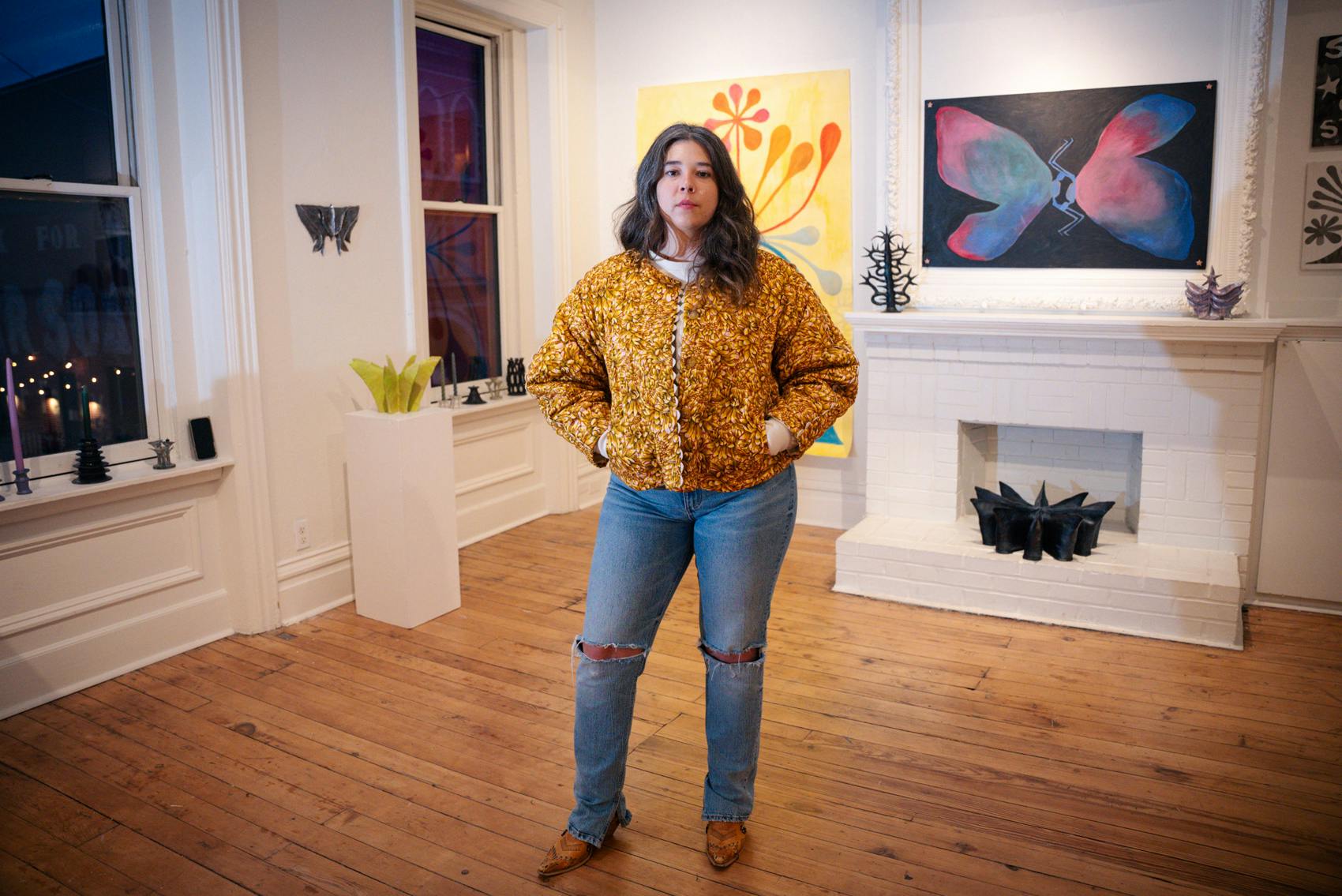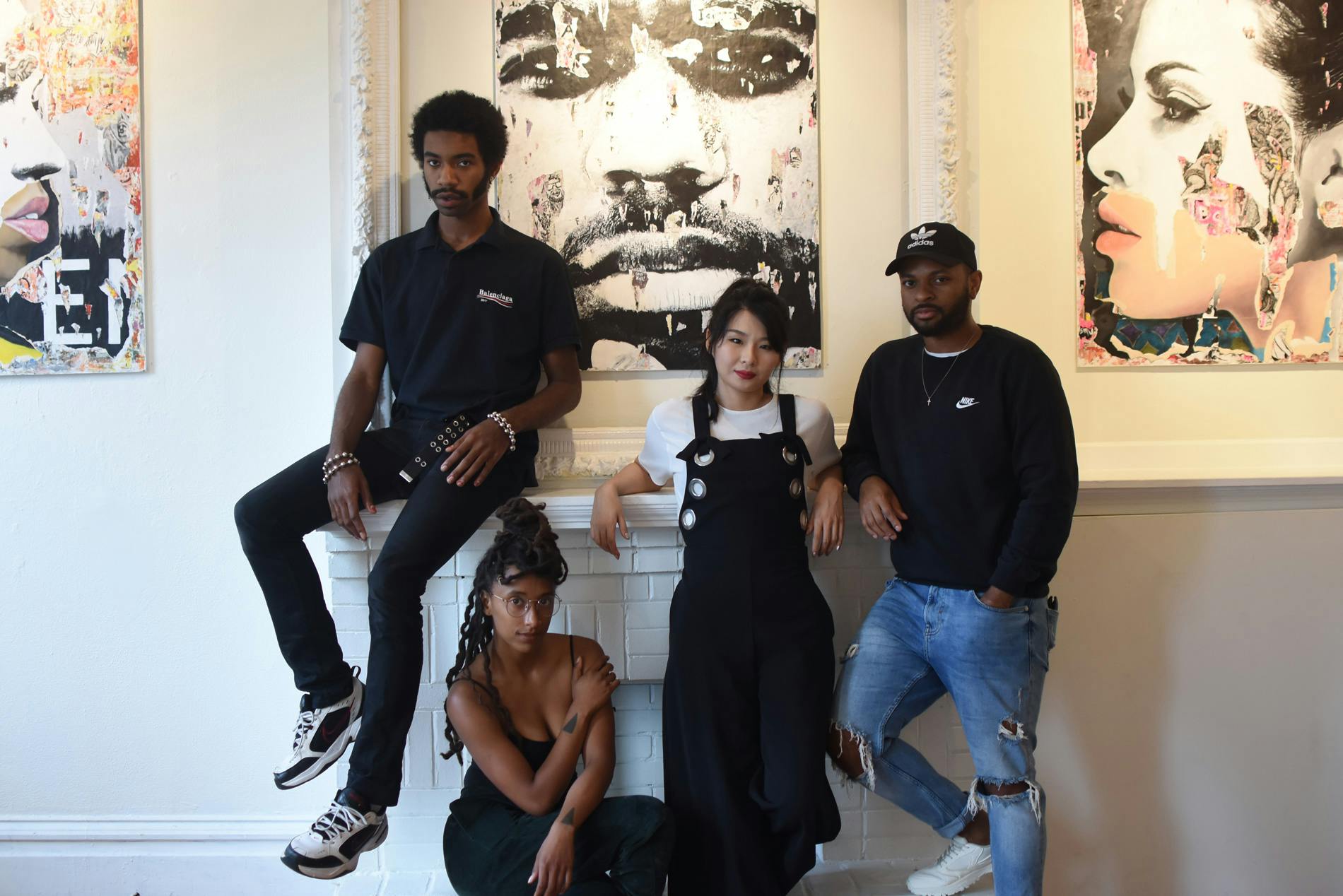Published February 8, 2024
Pittsburgh’s Bunker Projects & How Artist-Run Spaces Tackle Art, Money, and Community

Artist-run spaces are a radical venture in selling without selling out. Artists often find themselves exhausted by the money-driven rat race of the commercial art world and thus, seek new ways to exist outside the mainstream. Typically located near neighborhoods proliferated with artist studios and away from wealthier neighborhoods, artist-run spaces have played and continue to play a crucial role in experimentation that doesn’t necessarily lend itself to commercialization. Furthermore, artist-run spaces have often played important roles in community revitalization efforts. Occupying a space in the history of these ventures, Bunker Projects continues to bring this experimental and community-oriented ideology to Pittsburgh.
In 2012, three recent graduates of Penn State University’s BFA program wanted to build something of their own. Jessie Rommelt, Abbigael Beddall, and Cecilia Ebitz piled into a car and drove to the closest affordable city they knew of: Pittsburgh. Having visited a few times during college, Rommelt said she quickly made friends, saw the city’s potential, but also found Pittsburgh’s rich art history inspiring—home of Andy Warhol, The Mattress Factory, the first museum dedicated to installation art, and of course, the Carnegie International, the oldest running exhibition of contemporary art in North America held at the Carnegie Museum of Art.
While searching for spaces, they found themselves drawn to Penn Avenue in the Garfield neighborhood. Garfield was home to many artists, a few art spaces, notably the Irma Freeman Center, and already had an existing art crawl, called “Unblurred,” which still occurs on the first Friday of every month. A once-blighted neighborhood, Garfield had many vacant storefronts, which newly formed community groups, alongside local government initiatives, had started to tackle. In 2000, the Bloomfield-Garfield Corporation and Friendship Development Associates, Inc. formed the Penn Avenue Arts Initiative, which sought to connect artists with spaces in an attempt to rehab vacant properties through the distribution of small loans and grants.
Taking advantage of these new revitalization plans, Rommelt, Beddall, and Ebitz stumbled into a burnt-out Victorian-style apartment that, while needing major renovations, was offered at an extremely affordable price, free for the first few years. Mostly self-funded in the beginning and relying on friends to help fix-up the space, the three artists also received a generous grant from the Penn State Extension office, which has their art education program based in Pittsburgh. Rommelt notes, “I have so much appreciation for myself and my friends for how we just went for it. The sheer naïve and curious energy of young people is actually a practical gift.”
Originally planning to open an experimental artist’s studio and incubator space, the apartment-aspect led them to consider developing a residency component to their programming. Thus, after months of work, Bunker Projects opened in the winter of 2013 as both an artist residency and exhibition space— “a living laboratory for artists.” Named after their bunker-like studio space at Penn State, Bunker Projects remains an ode to their scrappy beginnings.
For many artist-run spaces, grants become a significant income stream, and important to sustainability. Rommelt quickly became aware of Pittsburgh’s robust funding landscape, so in 2016, applied for nonprofit status. She also noted that her biggest obstacle to funding and growing the platform has been people questioning the sustainability of artist-run ventures, so the nonprofit status coupled with the help of a board has been an essential resource in not only keeping the space running but also solidifying their seriousness in continued growth and success.
In 2018, to further connect the ethos of Bunker with the rest of the art community at-large, Rommelt and her team launched the Bunker Review. The Bunker Review is an online publication that features artist profiles, reviews, and contemporary art discourse. In Pittsburgh, critical discourse around art is scarce, so the Review plays an important role in the community for providing a platform for visual artists, writers and even poets.
According to Rommelt, the other two founders organically left the organization after a couple of years to pursue other opportunities, leaving Rommelt to lead Bunker into the future. Now over ten-years old, Bunker Projects is one of the oldest continuously running, artist-run spaces in Pittsburgh. Bunker has hosted over 225 artists and organized over 100 exhibitions. Some notable artists that have exhibited at Bunker include Shikeith (2014), Devon Shimoyama (2015), Su Su (2018), and Justin Emmanuel Dumas (2021), among others.
Over the past two years, the Bunker team has been slowly defining their two levels of programming—exhibition and residency. Prior to 2020, Bunker Project residents would create a body of work that culminated in an exhibition. According to Rommelt, “Residency now means something a bit different than it did initially. Exhibitions are paced and selected differently. Some of the new pathways we see are solidifying self-directed studio practice for young artists, as well as research, skill-building, networking, and material experimentation.” Furthermore, Rommelt adds, “I think allowing for slow and intentional change is so important for organizations like ours.”
Upcoming residents at Bunker include Théo Bignon, Rachael Starbuck, and Helena Dumansky. French artist and curator, Théo Bignon, is returning to Bunker for the second time. Now based in Montreal, Bignon creates embroideries, objects, and installations that speak to practices of desire and places of queer community. He hopes to use his time at Bunker to start work on a curatorial project that he plans to organize in Pittsburgh in the near future.
Miami-born, Pittsburgh-based artist, Rachael Starbuck works primarily in sculpture and video to investigate our bodies’ sensory experiences of moving through space—the feeling of closeness versus stretching across distances. She learned about Bunker Projects from a friend and former resident, and as a recent Pittsburgh transplant working from a small home studio, she sees her time at Bunker as an invaluable way to connect with the community and give her some much-needed space to work.
Helena Dumansky relocated to Pittsburgh from Tallinn, Estonia two years ago. Her paintings combine pop-surrealism with campy portraiture as a means to capture elements of the immigrant experience. With encouragement from her Pittsburgh community, she finally took the leap to apply to Bunker and will be using the opportunity to exhibit her work for the first time ever.
While there is limited data on the lifespan of artist-run spaces, they typically last for 2-10 years, making Bunker Projects a unique example of how to maintain sustainability without sacrificing the experimental nature of the enterprise. At the time, the emergence of Bunker Projects was significant to not only Pittsburgh, but also the community of Garfield as a whole. According to the 2013 Arts, Culture, & Economic Prosperity in Allegheny County report, Allegheny County ranked last among benchmark regions in the number of new arts and culture organizations founded in 2000 or after. Penn Avenue is also now home to several artist-run spaces, including but not limited to, Boom Concepts, Pull Proof Studio, and inter-, as well as other important art organizations, such as Silver Eye Center for Photography. Rommelt says, “slow and steady, both financially and staffing-wise, really does win the race,” and fortunately, Pittsburgh is a city that truly allows for that sort of mentality.
Testudo is always looking for more voices to write with us about the art world. If you’d like to pitch an article, please see our pitch guide for more information!



